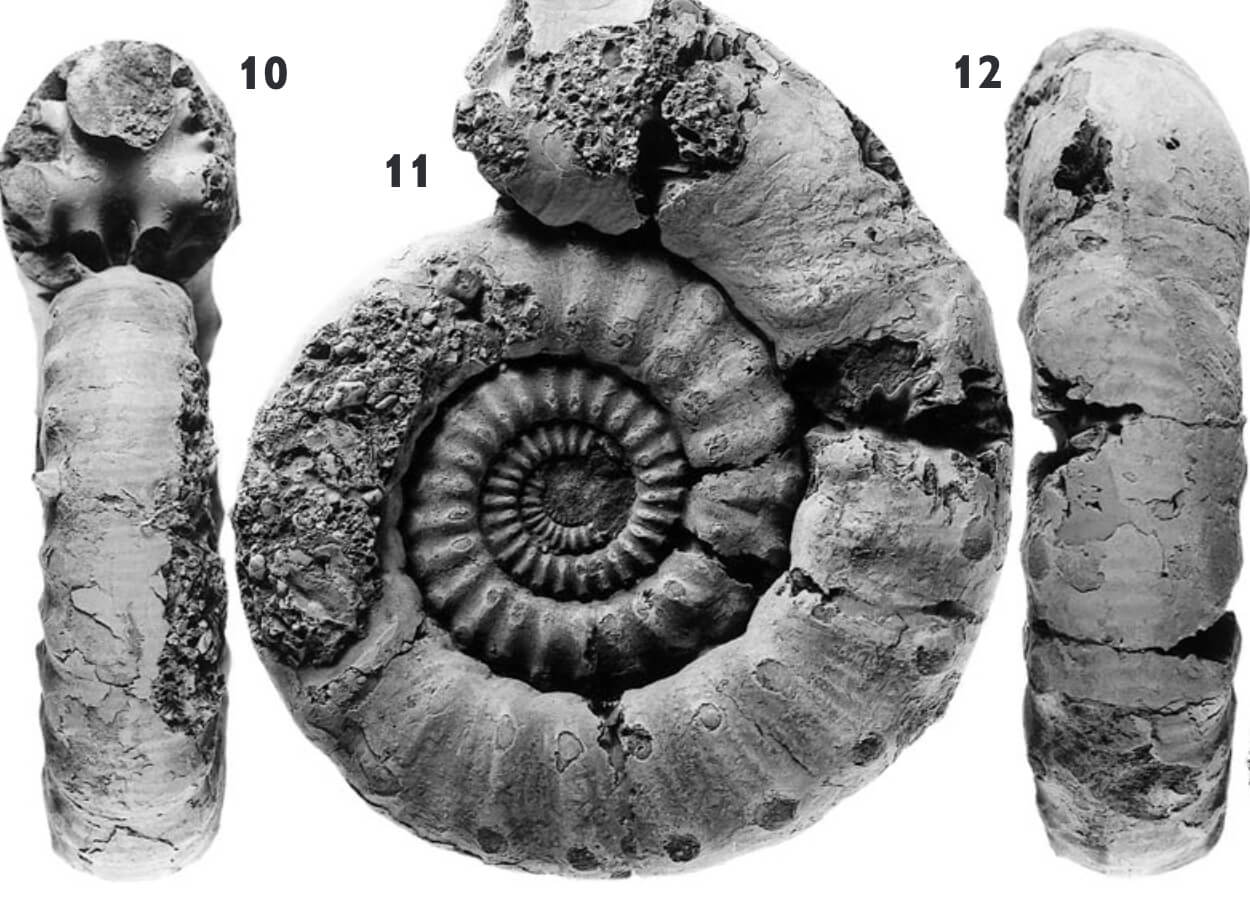
How to Cite
Share
Abstract
The Jurassic succession of the island of Bornholm in the Baltic Sea includes the Hettangian – lowermost Pliensbachian Rønne Formation, the Lower Pliensbachian Hasle Formation, the Upper Pliensbachian – (?)Lower Aalenian Sorthat Formation and the (?)Upper Aalenian – Bathonian Bagå Formation. Ammonites are only known from the Hasle Formation, and all available ammonite specimens from this formation are described and figured. Material reported by previous authors has been re-examined, together with previously undescribed specimens. Nine genera and eleven species are recognised. The ammonites show that the rocks from which they were collected fall into the Lower Pliensbachian (Carixian) Substage. The lowermost subzone proved in the Hasle Formation is the basal Taylori Subzone of the Jamesoni Zone of the Northwest European Subboreal standard zonation, which marks a marine transgression over underlying marginal marine beds without ammonites belonging to the Rønne Formation. All subzones of the Jamesoni Zone are proved together with the Valdani Subzone of the Ibex Zone. The Upper Pliensbachian (Domerian) Substage, previously reported, is now thought to be unproved by ammonite evidence. The underlying and overlying Rønne and Sorthat Formations are dated by dinoflagellate cysts and terrestrial palynomorphs, and the ammonite occurrences provide important control points for palynostratigraphic dating of the succession.
How to Cite
Share
Downloads
Editors: Jon R. Ineson and Finn Surlyk
The Jurassic rocks of Denmark and East Greenland record the evolution of two discrete portions of the Mesozoic rift complex, now separated by the North Atlantic Ocean. The Jurassic of Denmark and adjacent areas occurs mostly in the subsurface and research has thus focussed [...]










